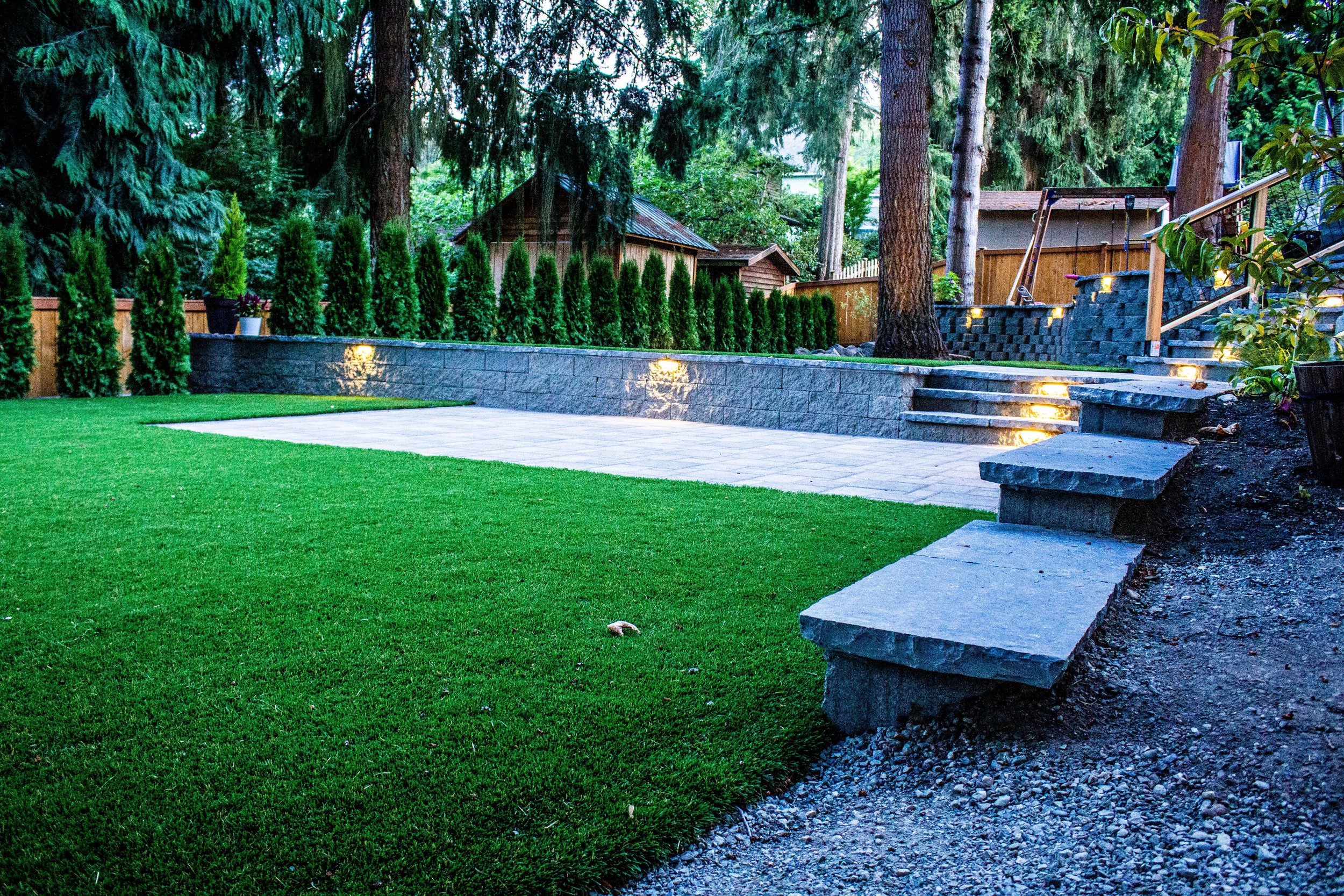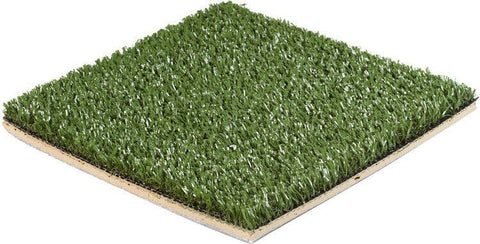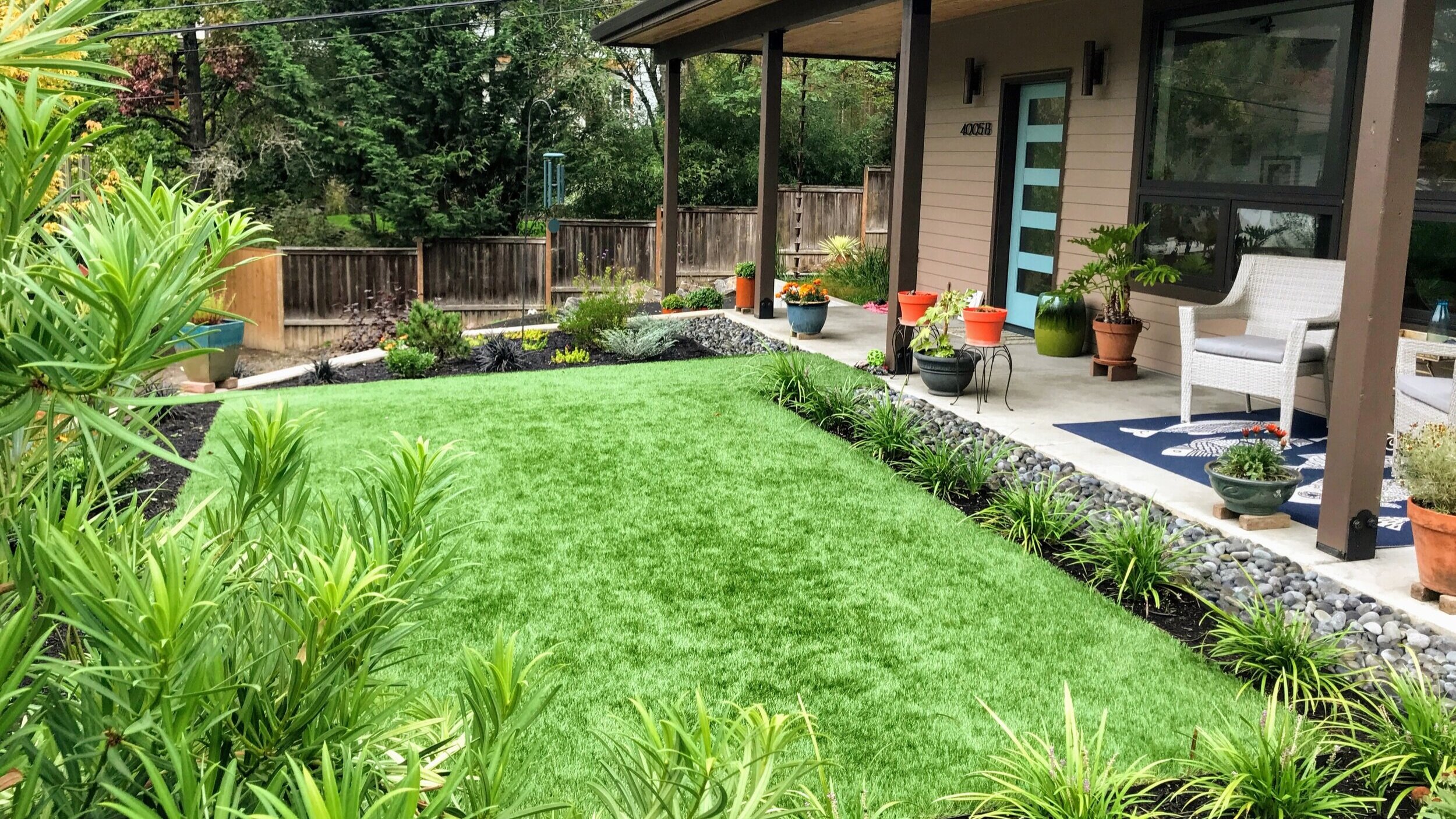Professional Arizona Turf Installation Solutions for Home and Commercial Use
Professional Arizona Turf Installation Solutions for Home and Commercial Use
Blog Article
See Why Homeowners Prefer Artificial Lawn for Sustainable Landscape Design Practices
As home owners progressively focus on sustainability in landscape design, synthetic grass has become a compelling option to typical turf. Its capacity to save water, reduce upkeep efforts, and minimize environmental influence positions it as a useful selection for those looking for environment-friendly services. The visual charm and versatility of man-made lawn provide to diverse layout preferences. Nonetheless, the implications of this change expand beyond plain ease and visual appeals, motivating a more detailed assessment of how these choices influence more comprehensive ecological end results. What remains to be checked out is the complete range of benefits that artificial grass can provide to house owners and the setting alike.
Water Conservation Advantages
Among one of the most substantial benefits of synthetic grass is its duty in water conservation. Typical turf lawns call for substantial quantities of water to preserve their lush look, commonly resulting in overuse of neighborhood water resources, particularly in deserts. In comparison, synthetic lawn eliminates this demand totally, as it does not call for irrigation. This not only conserves water but additionally reduces the stress on metropolitan water supply, specifically throughout dry spell problems.
In addition, the installation of artificial lawn can contribute to a much more lasting landscape. Home owners can considerably decrease their water bills, enabling reallocation of sources to other ecological campaigns or house usages. In addition, fabricated grass is created to stand up to different climatic conditions without the need for supplementary watering, making it an optimal selection for areas facing water shortage.
The environmental benefits extend beyond instant water financial savings. By reducing water consumption, synthetic turf aids to alleviate the effects of climate change, protecting crucial environments that are threatened by excessive water extraction. As sustainable landscape design practices gain grip, synthetic grass emerges as a responsible choice for homeowners looking for to produce environment-friendly exterior spaces.
Minimized Upkeep Initiatives
Synthetic grass substantially decreases maintenance efforts compared to traditional grass lawns. With fabricated lawn, property owners can eliminate the lengthy tasks connected with all-natural landscaping, such as mowing, fertilizing, and weeding. This not only saves important time but also minimizes physical labor, making yard care accessible for people of every ages.
One of one of the most noteworthy benefits is the lack of regular mowing. Traditional lawns call for regular cutting to keep a cosmetically pleasing elevation, whereas fabricated grass continues to be consistently lavish without the need for cutting. Additionally, house owners no longer need to apply plant foods or chemicals, which are typically required to maintain all-natural lawn healthy. This change not just lightens the workload yet also promotes a neater, a lot more consistent appearance year-round.
Additionally, synthetic grass is durable and resilient, calling for minimal upkeep beyond occasional brushing and washing to get rid of debris. This convenience of maintenance permits home owners to appreciate their outdoor rooms without the continuous worry of maintenance, offering more time for recreation discover this and family activities. Ultimately, the lowered upkeep initiatives connected with man-made turf make it an attractive alternative for those looking for a low-maintenance, visually appealing landscape.

Environmental Influence Decrease
There is a growing recognition of the ecological benefits linked with synthetic grass, especially in terms of water conservation and reduced chemical usage. Standard grass need considerable quantities of water, particularly in drought-prone areas, resulting in increased strain on local water sources. On the other hand, synthetic grass eliminates the need for irrigation, considerably decreasing water intake and promoting sustainability.
Furthermore, traditional grass upkeep usually includes the application of herbicides, pesticides, and fertilizers, which can add to dirt and water contamination. Fabricated turf alleviates this environmental hazard by calling for very little upkeep and basically getting rid of the need for dangerous chemicals. This not just improves soil health but likewise protects neighborhood environments from toxic drainage.
In addition, the manufacturing of natural lawn yards typically involves making use of fossil gas for trimming see and landscape design devices, further adding to greenhouse gas exhausts. By picking fabricated grass, property owners can substantially reduce their carbon impact related to yard care tasks.
Aesthetic Charm and Convenience
Along with its environmental benefits, artificial lawn offers significant aesthetic charm and adaptability for landscaping. Homeowners can attain a rich, environment-friendly appearance year-round, eliminating the seasonal variations generally connected with natural turf. This regular aesthetic not just improves the visual charm of a building however additionally adds to a well-kept and refined look.
Furthermore, synthetic grass is readily available in a range of structures, shades, and designs, enabling customization to match individual preferences and layout motifs - Arizona artificial turf. Whether made use of in property gardens, industrial rooms, or entertainment areas, it can perfectly incorporate into diverse landscaping designs, from modern minimalist to lavish exotic settings
The convenience of synthetic grass prolongs beyond mere look; it can be installed in numerous places, including rooftops, patios, and even interior areas, developing possibilities for distinct landscaping options. Furthermore, it is suitable for a variety of tasks, from kids's backyard to pet-friendly environments, offering functionality without compromising design.
Inevitably, the aesthetic charm and versatility of synthetic lawn make it an appealing option for homeowners looking for link sustainable landscaping options that do not sacrifice beauty for environmental responsibility.

Long-Term Cost Cost Savings
One of the most engaging advantages of artificial grass is its possibility for long-term cost savings. Unlike natural turf, which calls for regular maintenance-- consisting of mowing, watering, feeding, and parasite control-- artificial turf substantially minimizes these recurring costs.
Furthermore, synthetic grass has a life-span of 15 to 25 years, depending on its high quality and use. This durability decreases substitute prices, making it a more cost-effective option in the future. Furthermore, the first financial investment in artificial turf can commonly be redeemed with the savings accrued in time.
While the upfront price may appear greater compared to sod installation, the collective cost savings from decreased maintenance and water use typically exceed these first expenditures. Inevitably, the fostering of synthetic grass not just advertises a sustainable landscape design service however also uses house owners a monetarily wise alternative that lines up with long-lasting budgeting objectives.
Conclusion
Synthetic grass becomes an engaging alternative for sustainable landscaping, using substantial advantages in water preservation, lowered upkeep initiatives, and diminished environmental influence. Its aesthetic allure and versatility boost the visual landscape while straightening with modern-day sustainability goals. Lasting cost savings contribute to its appearance for house owners. As neighborhoods progressively prioritize eco-friendly techniques, the fostering of synthetic grass stands for a progressive step towards achieving resistant and sustainable landscapes.
In addition, man-made lawn is designed to hold up against various climatic conditions without the requirement for supplementary watering, making it a suitable option for regions encountering water shortage. (Phoenix turf companies)

Fabricated turf emerges as a compelling choice for sustainable landscape design, providing substantial benefits in water conservation, decreased upkeep efforts, and lessened environmental effect.
Report this page